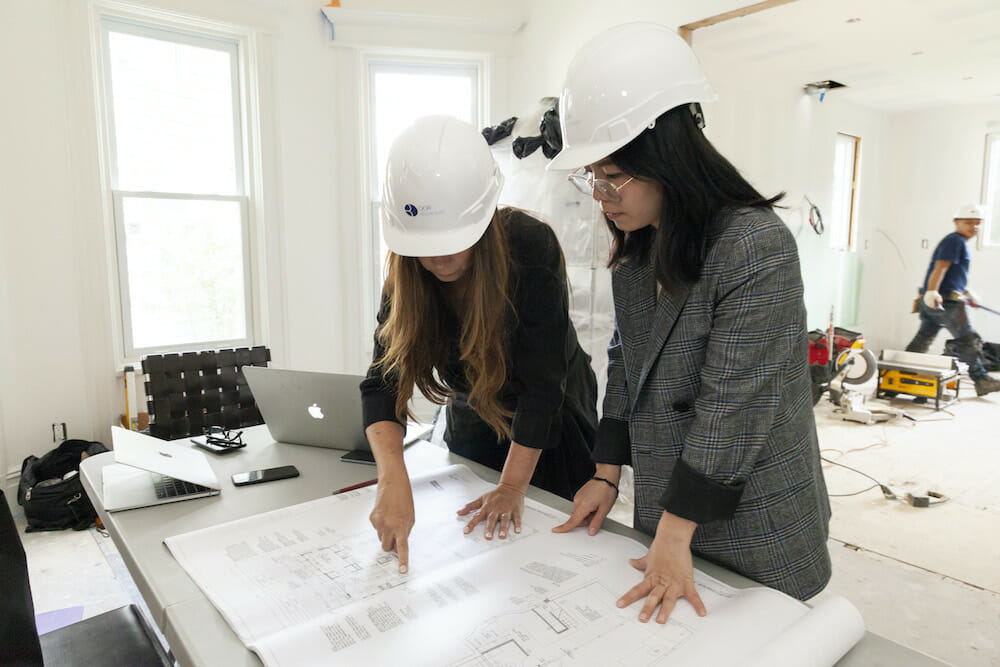Understanding the Diverse Career Paths Available for Aspiring Architect
As an aspiring Architect, you have a world of career courses waiting for you. Whether you're attracted to standard style or the subtleties of lasting layout, there's a specific niche that aligns with your rate of interests.
Typical Design: Designing Frameworks and buildings
Standard style concentrates on designing structures and structures that blend performance with visual appeal. Your layouts can mirror cultural heritage, showcasing neighborhood practices while fulfilling modern demands.
You'll create abilities in composing, model-making, and site analysis, enabling you to visualize and interact your concepts properly. Involving with clients, you'll need to understand their vision and convert it right into viable styles.
Additionally, building codes and sustainability practices are essential in your work, ensuring your structures are eco pleasant and risk-free. As you grow in your occupation, you'll locate possibilities in property, industrial, or perhaps reconstruction projects, each offering distinct challenges. Accepting standard style paves the method for a satisfying profession that admires the past while shaping the future.
Urban Preparation: Forming Communities and Public Spaces
As an ambitious Architect, you can play an essential role as a metropolitan organizer, transforming exactly how neighborhoods engage and operate. By using area engagement approaches, you'll guarantee that locals have a voice fit their atmosphere. And also, integrating lasting style principles will help develop rooms that not only fulfill today's needs yet likewise shield the future.
Function of Urban Planners
While numerous could think about designers as the sole enthusiasts behind structures, urban planners play a necessary role fit the wider landscape of communities and public rooms. They analyze land use, zoning legislations, and area needs to create sustainable atmospheres that boost quality of life. By teaming up with various stakeholders, you'll help create parks, transportation systems, and houses that promote social communication and ease of access. Urban organizers also concentrate on ecological considerations, making certain that growths incorporate environment-friendly areas and assistance biodiversity. Your experience in spatial layout and community dynamics allows you to picture future development while maintaining social heritage. In this essential role, you'll straight influence how people experience their environments, making every job a possibility for favorable modification.
Community Engagement Strategies
Efficient community interaction methods are crucial for metropolitan organizers to guarantee that the voices of residents are heard and valued in the planning process. To promote significant dialogue, you must focus on open online forums and workshops where area members can reveal their concepts and concerns. By actively listening and integrating responses, you'll create spaces that reflect the community's requirements, eventually leading to more effective and lasting metropolitan settings.
Sustainable Layout Concepts
When creating metropolitan spaces, incorporating sustainable layout concepts is crucial for developing settings that prosper both environmentally and socially. You need to begin by concentrating on energy performance, making use of products that decrease waste and promote recycling. Think about integrating eco-friendly spaces, like parks and yards, to improve biodiversity and boost air high quality. Advertising walkability and public transport can lessen reliance on cars and trucks, promoting a much healthier community.
Creating with water preservation in mind is also vital-- believe about rainfall yards and absorptive surfaces to handle stormwater. Entailing neighborhood members during the preparation procedure assurances that the rooms you develop meet their demands and encourage social communication. By welcoming these concepts, you'll contribute to lively, lasting urban landscapes that benefit every person.

Landscape Architecture: Developing Sustainable Outside Settings
As you discover landscape design, you'll uncover essential design concepts that produce beautiful and useful outdoor areas. Sustainable methods play an essential role in making certain these atmospheres thrive while minimizing ecological impact. And also, you'll locate a range of profession chances that allow you to make a real distinction in exactly how people interact with nature.
Design Concepts in Landscape
Comprehending layout concepts in landscape architecture is necessary for creating lasting exterior environments that harmonize with nature. You'll require to contemplate aspects like range, equilibrium, and proportion to guarantee your layouts feel cohesive and welcoming. Incorporating native plants not only boosts biodiversity however additionally lowers water use, making your landscape durable. Believe concerning the circulation of space and exactly how individuals communicate with it; pathways and seating locations ought to invite expedition and relaxation. Furthermore, pay interest to seasonal modifications, designing with materials that match the environments year-round (Architect). By focusing on sustainability and aesthetics, you can produce outdoor rooms that enhance the area and promote wellness. Welcoming these principles will certainly establish a solid foundation for your job in landscape style.
Lasting Practices Introduction
Sustainable methods in landscape design not only focus on aesthetic appeals yet also prioritize ecological health and resource preservation. By incorporating indigenous plants, you improve biodiversity and reduce the demand for chemical plant foods and chemicals. Executing reliable watering systems assists conserve water and reduces overflow, safeguarding nearby environments. You can create spaces that promote dirt wellness, such as practicing and utilizing organic materials permaculture principles. Additionally, including environment-friendly infrastructure, like rainfall gardens and permeable pavements, aids in stormwater administration and reduces metropolitan warmth. When you produce outdoor environments with sustainability in mind, you add to a much healthier planet and supply rooms that cultivate community connection. Eventually, these techniques ensure your designs benefit both people and the environment for many years to find.
Profession Opportunities Expedition
With a strong foundation in lasting methods, landscape design provides a selection of profession courses that enable you to make a significant impact on the setting. Urban organizers typically collaborate with landscape engineers to develop environment-friendly areas in city settings, enhancing city livability. If you're enthusiastic concerning education and learning, think about becoming a landscape style educator, inspiring future generations.
Sustainable Design: Concentrating On Eco-Friendly Practices
As you discover your profession in design, welcoming environment-friendly practices can set you apart in an affordable field. Sustainable design concentrates on producing structures that decrease ecological influence while boosting owner health. By integrating renewable materials, energy-efficient systems, and lasting structure methods, you'll add to a greener future.
Begin by acquiring understanding of eco-friendly accreditations like LEED or BREEAM, which can boost your credentials. Take into consideration exactly how natural light, ventilation, and thermal performance can maximize layout. Team up with designers and environmental consultants to introduce options that reduce waste and conserve sources.
Do not neglect the significance of community involvement-- engaging regional stakeholders can motivate layouts that official statement balance with the environment. As clients increasingly prioritize sustainability, your know-how in eco-friendly practices will not just draw in jobs yet also meet your passion for liable style. Welcome click site this essential aspect of the career, and enjoy your occupation flourish.
Historical Preservation: Shielding and Recovering Cultural Heritage
While you start on your building trip, consider the necessary role of historic preservation in preserving our social heritage. This field concentrates on the protection and reconstruction of substantial structures, websites, and frameworks that tell the tales of our past. By participating in historical conservation, you'll assist safeguard the building heritage that shapes neighborhood identity.
As a historical preservation Architect, you'll examine historic importance and analyze the problem of structures. You'll work closely with historians and conservationists to guarantee genuine reconstruction methods are employed. This profession path allows you to mix creative thinking with study, enabling you to develop options that value initial materials and craftsmanship.
Your work not just adds to sustainability by reusing existing buildings but likewise cultivates a sense of pride within neighborhoods. Accepting this path will certainly aid you come to be a guardian of history, protecting the tales and visual appeals that improve our lives.
Interior Design: Enhancing Indoor Spaces
Historical preservation and indoor architecture both share a commitment to boosting the built atmosphere, however they concentrate on different elements. While historical conservation stresses maintaining a framework's historical and social value, indoor design nos in on optimizing indoor areas for functionality and appearances.
As a hopeful Architect, you'll find that interior design permits you to blend creative thinking with technological skills. You'll make spaces that not only look excellent but also promote comfort and performance. This field involves comprehending how light, shade, and materials connect within an area, impacting mood and functionality.
You'll work on different jobs, from household homes to business workplaces, making certain that each atmosphere satisfies the needs of its owners. By prioritizing user experience, you can transform insides into functional and motivating rooms, making a considerable influence on how individuals connect with their surroundings. Accept the opportunity to enhance interior settings and form the means people live and function.
Industrial Design: Merging Functionality With Aesthetics
Industrial layout plays an essential role in developing items that seamlessly mix appearances with functionality, making certain that what you make use of day-to-day is not just Learn More Here visually attractive yet also functional. As an ambitious Architect, you can involve on your own in this area, focusing on developing everything from furnishings to customer electronic devices. Your work entails comprehending customer needs, products, and producing procedures, permitting you to create ingenious options that enhance daily experiences.
In industrial layout, you'll frequently team up with engineers, makers, and marketing professionals, making sure that your designs are not just gorgeous yet also feasible. You'll learn to stabilize kind and feature, focusing on use without giving up design. By honing your skills in mapping out, 3D modeling, and prototyping, you'll be well-equipped to bring your concepts to life. This profession course provides a vibrant atmosphere where creative thinking satisfies practicality, making it a rewarding choice for designers thinking about shaping the items of tomorrow.
Frequently Asked Questions
What Educational Qualifications Do I Need to End Up Being a Designer?
To come to be an engineer, you'll require an expert degree in architecture, typically a Bachelor's or Master's. In addition, you'll have to finish a teaching fellowship and pass the Architect Registration Assessment to exercise legitimately.
Exist Accreditation Demands for Different Architectural Profession Paths?
Yes, there're accreditation requirements for different architectural courses. Architect. You'll require to pass tests, full teaching fellowships, and often seek specialized training, depending on your chosen focus, like landscape architecture, urban design, or historic conservation
What Software Skills Are Essential for Architects Today?

How Can I Gain Practical Experience While Examining Design?
You can obtain practical experience by interning at architectural companies, taking part in design competitions, offering for community tasks, or teaming up with schoolmates on real-world tasks. These chances improve your abilities and build valuable links in the sector.
What Task Opportunities Exist Outdoors Standard Style Firms?
You can explore various task possibilities outside typical architecture companies, like metropolitan planning, interior design, landscape architecture, construction administration, real estate development, or perhaps roles in sustainability consulting. Each deals distinct obstacles and benefits.
Whether you're attracted to typical architecture or the subtleties of sustainable design, there's a particular niche that straightens with your passions.When developing metropolitan rooms, including sustainable style principles is vital for developing atmospheres that prosper both environmentally and socially.As you explore landscape design, you'll uncover important design principles that develop stunning and practical outside rooms.Comprehending style concepts in landscape style is essential for producing sustainable outside settings that balance with nature.In commercial style, you'll commonly collaborate with marketing professionals, engineers, and manufacturers, ensuring that your layouts are not only beautiful but also viable.
Comments on “Architect Recommended Software for 3D Modeling”